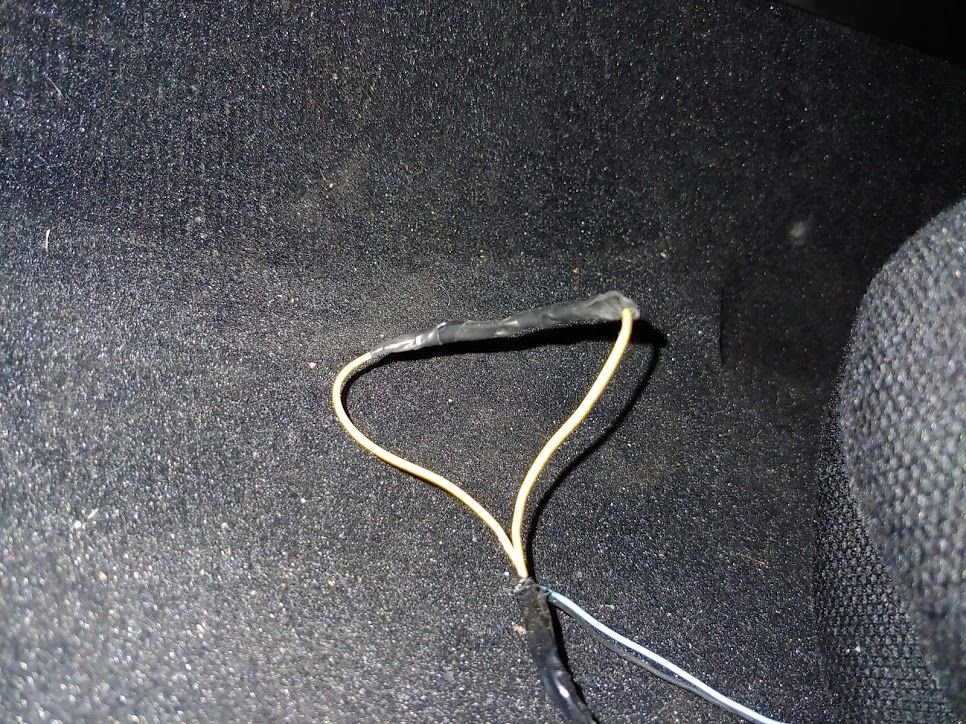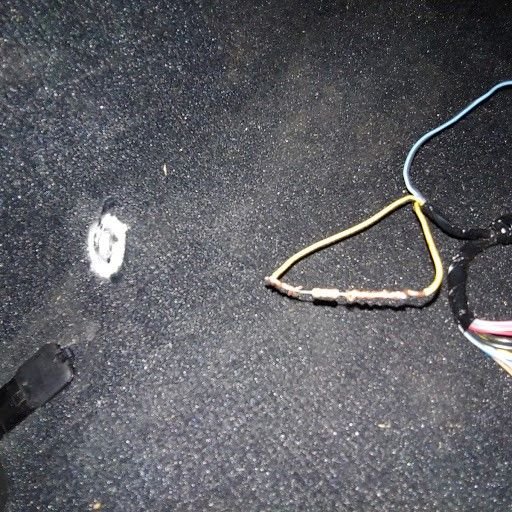Has anyone replaced the front seats in their sedan?
#361
I don't think just measuring the seat's resistance will give you an accurate reading. I would think the circuit is much more complex than a simple resistive load.
However, since the resistors do seem to work for some period of time, it's worth investigating the voltage across them and current. The former you measure with the circuit energized, the latter you compute based on the resistance you measured before installing them into the circuit using the formula above.
However, since the resistors do seem to work for some period of time, it's worth investigating the voltage across them and current. The former you measure with the circuit energized, the latter you compute based on the resistance you measured before installing them into the circuit using the formula above.
To "measure with the circuit energized" would I put test leads on the original wiring while hooked up to the resistor with the car on? How do I compute the current based on a resistance that I have not measured?
#362
Review what I said in post #358. If you use a new resistor, the light stays off, right? So measure the resistor's value before installing. Measure the voltage across resistor once installed and powered. Compute current and power based on previous formulas.
Resistor is in series with the seat circuit right? In a series circuit, current remains the same across all loads. Voltage drops differ. Knowing the supply current you can even compute the seat's apparent resistance (subtract voltage drop across your resistor from supply then calculate for R using the computed current).
Edit. Components are designed to handle particular power requirements. It's all based on applications. Most electronic circuits are very low power so 1/4 watt rating is plenty with margin to spare.
Resistor is in series with the seat circuit right? In a series circuit, current remains the same across all loads. Voltage drops differ. Knowing the supply current you can even compute the seat's apparent resistance (subtract voltage drop across your resistor from supply then calculate for R using the computed current).
Edit. Components are designed to handle particular power requirements. It's all based on applications. Most electronic circuits are very low power so 1/4 watt rating is plenty with margin to spare.
#363
Resistor is in series with the seat circuit right? In a series circuit, current remains the same across all loads. Voltage drops differ. Knowing the supply current you can even compute the seat's apparent resistance (subtract voltage drop across your resistor from supply then calculate for R using the computed current).
Thanks for all your help- I am learning a lot. Now make sure to explain everything to me like you are talking to a 5 year old when it comes to electricity.
#364
5 yr old explanation; Don't stick your finger into a powered empty light bulb socket!!!! Been there, done that.
Correct, resistance is measured in ohms Ω.
Can you post a pic as I'm having a hard time visualizing this. By your description, it sounds like the resistor(s) placement is in parallel with the seat.
So lets clarify that first before moving forwards.
Correct, resistance is measured in ohms Ω.
The resistor is wired up between the two wires for the airbag under the seat where they would normally be plugged into the seat. So should I measure the original wiring with a resistor hooked up to see if the voltage remains constant?
So lets clarify that first before moving forwards.
#365
5 yr old explanation; Don't stick your finger into a powered empty light bulb socket!!!! Been there, done that.
Correct, resistance is measured in ohms Ω.
Can you post a pic as I'm having a hard time visualizing this. By your description, it sounds like the resistor(s) placement is in parallel with the seat.
So lets clarify that first before moving forwards.
Correct, resistance is measured in ohms Ω.
Can you post a pic as I'm having a hard time visualizing this. By your description, it sounds like the resistor(s) placement is in parallel with the seat.
So lets clarify that first before moving forwards.
Here is a picture- the resistor is under the electrical tape at the top of the pic

#367
Does this picture help? It is an older resistor, but this is essentially how it looks without the electrical tape.

My dad did something very similar when he was much older. To see if a light socket worked he stuck a screwdriver into it and got quite a shock. To be fair he was extremely intelligent, but definitely not nearly as handy as me. He used to joke and refer to himself as "handyman Jim." One year he got in the mail a membership for the Handyman Club of America. Everyone got these membership offers in the mail, but he played it off like they knew he was an excellent handyman and it was an exclusive offer.
#368
Ok. I think I understand now. In this case it's even simpler then.
You know the value of the resistor (X ohms). Using a dmm, take a voltage reading across the resistor leads with the circuit energized.
Compute for I (current) = V/R. Now you can figure out what power rating you need, P=(I^2)R, or just I*V. Use a resistor at least 2-3x for safety margin.
As an example, lets assume 12V and 2Ω, so that's 6A and 72 watts. Highly doubt there's a 12V across the resistor as you'd be frying them let and right.
You know the value of the resistor (X ohms). Using a dmm, take a voltage reading across the resistor leads with the circuit energized.
Compute for I (current) = V/R. Now you can figure out what power rating you need, P=(I^2)R, or just I*V. Use a resistor at least 2-3x for safety margin.
As an example, lets assume 12V and 2Ω, so that's 6A and 72 watts. Highly doubt there's a 12V across the resistor as you'd be frying them let and right.
#369
Ok. I think I understand now. In this case it's even simpler then.
You know the value of the resistor (X ohms). Using a dmm, take a voltage reading across the resistor leads with the circuit energized.
Compute for I (current) = V/R. Now you can figure out what power rating you need, P=(I^2)R, or just I*V. Use a resistor at least 2-3x for safety margin.
As an example, lets assume 12V and 2Ω, so that's 6A and 72 watts. Highly doubt there's a 12V across the resistor as you'd be frying them let and right.
You know the value of the resistor (X ohms). Using a dmm, take a voltage reading across the resistor leads with the circuit energized.
Compute for I (current) = V/R. Now you can figure out what power rating you need, P=(I^2)R, or just I*V. Use a resistor at least 2-3x for safety margin.
As an example, lets assume 12V and 2Ω, so that's 6A and 72 watts. Highly doubt there's a 12V across the resistor as you'd be frying them let and right.
#370
Jsolo- When I took the reading on the airbag wires with power I got a range of 2.0-2.8 ohm. It usually settled around 2.2-2.4 so I think I have the right ohm rating. Does this mean I have the right wattage, but should consider doubling the wattage of my resistors to 4.4 watts to be safe? I tried getting a reading here in volts on this setting, but nothing really came up in AC or DC unless I did a "relative" reading. When I did that the numbers fluctuated wildly.

#372
That's what I was thinking- relative to what? It was always a negative number and it fluctuated a lot, probably almost 100 points. Does these readings even mean anything in "mV?" You mentioned earlier that I would check the volts in ohms. If that is the case then, my ohms are reading right around 2.2-2.4 most of the time. So should I interpret that to mean I should look for 2.2 ohm resistors that are in the 4-5 watt range (double the ohm reading)?



